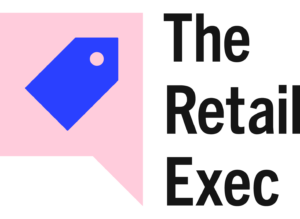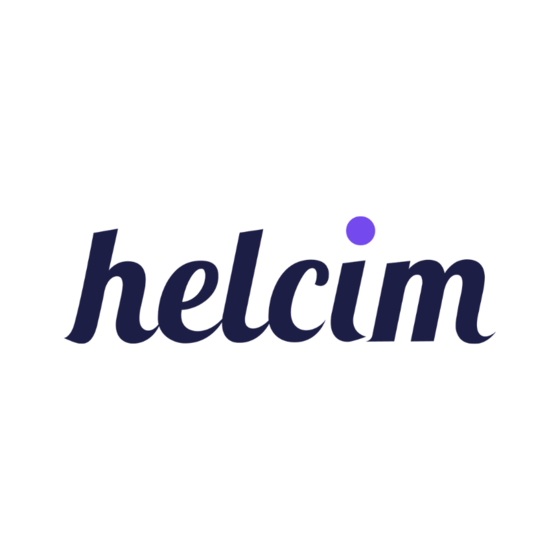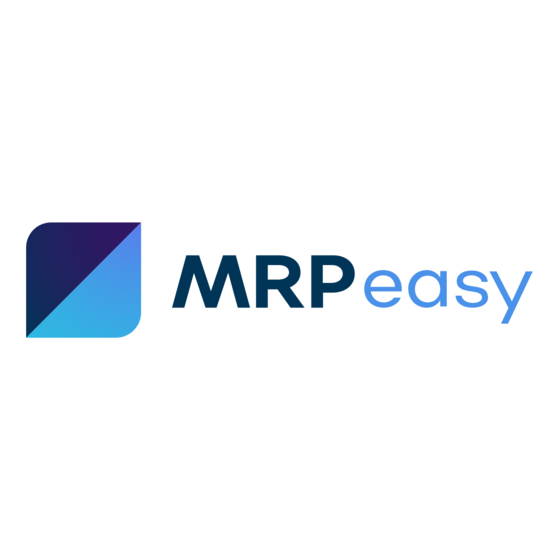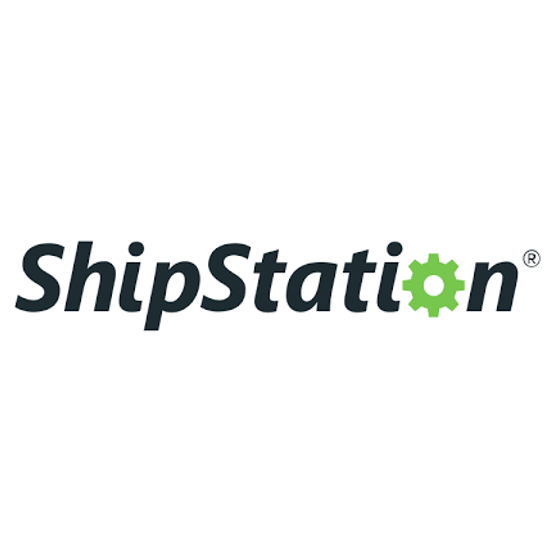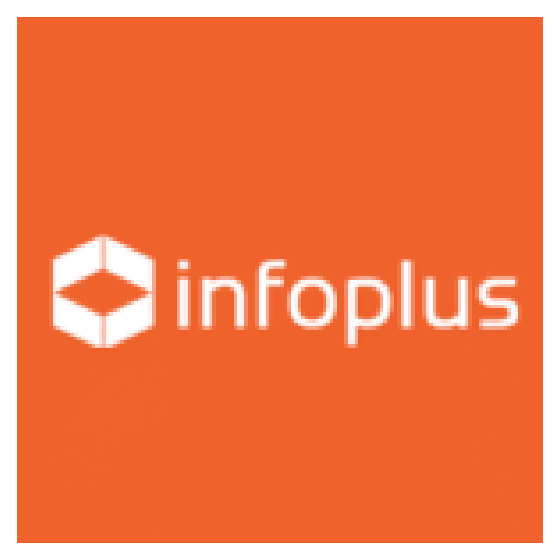The 10 Best Inventory Management Systems
Alright, I’ve elevated the top 10 inventory management software picks here, for easy reference. You’ll find the top use case for each here.
Get free help from our project management software advisors to find your match.
In ancient times, retailers used something called pen and paper to record how much product they had in stock, manually adding and subtracting for every unit that came and left. Then there was Excel sheets, which was still pretty rough.
Finally, inventory management software changed the game.
Ecommerce retailers couldn't exist without computers and the internet, obviously. So, it only makes sense that they use these futuristic inventions to automatically keep up with their inventory.
First there were a few options, but now there are so so many. It's exhausting to have to choose. The best inventory management software is out there, you just have to find it.
You want something that'll automate key processes like ordering, counting, storing, selling, and returning inventory. You want to reduce manual errors, save time, and use your time for more important stuff, like growing your brand.
We've done the work. That's why you're here. We have pallets and pallets of ecommerce expertise, plus a scoring system to reduce our own manual errors, which has resulted in this list of best ecommerce inventory software.
Let's get into it.
Why Trust Our Software Reviews
We’ve been testing and reviewing retail and ecommerce software since 2021.
As retail experts ourselves, we know how critical and difficult it is to make the right decision when selecting software. We invest in deep research to help our audience make better software purchasing decisions.
We’ve tested more than 2,000 tools for different finance and accounting use cases and written over 1,000 comprehensive software reviews. Learn how we stay transparent and our review methodology.
Comparing the Best Inventory Management Software, Side by Side
OK, chart time, folks. First, you’ll find the pricing and trial details for these top inventory management software picks.
| Tool | Best For | Trial Info | Price | ||
|---|---|---|---|---|---|
|
1
|
Best for high sale order volume management |
Free demo available |
From $349/month | Website | |
|
2
|
Best for CPG businesses |
30-day free trial |
From $149/month | Website | |
|
3
|
Best for multi-location inventory management |
Free trial available |
From $59/month | Website | |
|
4
|
Best for secure, no-fee card processing |
Free account available |
From 0.50% + $0.25 per transaction | Website | |
|
5
|
Best for small manufacturers' production planning |
30-day free trial |
From $49/user/month | Website | |
|
6
|
Best free option for small shippers |
14-day free trial |
From $29/month (billed annually) | Website | |
|
7
|
Best for cross-module workflows |
Free demo available |
From $1,000/month | Website | |
|
8
|
Best shipping and inventory combo |
30-day free trial |
From $9.99/month | Website | |
|
9
|
Best for reporting features |
Free demo |
Pricing upon request | Website | |
|
10
|
Best all-in-one manufacturing system |
14-day free trial |
From $179/month (billed annually) | Website |
The 10 Best Inventory Management Software for Scaling, Reviewed
Here are our top 10 picks for the best ecommerce inventory software. For each one, you’ll find a quick description, why we picked it, its top features, coolest integrations, plus pros and cons.
Cin7 Core is an inventory management tool that caters to businesses managing high volumes of sales orders across multiple channels. It provides a suite of features including accounting integrations, warehouse management, and point-of-sale systems, which support businesses in effectively managing large quantities of transactions and inventory.
Why I picked Cin7 Core: As an inventory management software, it offers extensive features that cater to the needs of businesses looking for robust inventory management, accounting integration, and detailed reporting and forecasting. Its most advanced plan has the ability to handle up to 120,000 orders per year. The software also offers features such as real-time tracking, automated replenishment, and ecommerce integration, making it easier to understand your stock levels and keep up with demand.
Standout features & integrations:
Features include cost tracking, order consolidation, automated notifications and reports, and mailing lists. It also offers barcode scanning and track transfers between locations and warehouses for better inventory management.
Integrations include Shopify, Amazon, WooCommerce, BigCommerce, Magento, Etsy, eBay, Walmart, Quickbooks, Xero, and more.
Pros and cons
Pros:
- Responsive and quick interface with detailed reports
- Handles multiple warehouses
- Integration with accounting software
Cons:
- CRM features are not fully developed
- Concerns about the software's ability to keep up with business growth
Settle is a unified platform designed for consumer packaged goods (CPG) brands to plan, purchase, and pay for inventory, with integrated access to transparent financing. It centralizes procurement, inventory management, accounts payable automation, and working capital solutions.
Why I picked Settle: Settle offers comprehensive inventory management features that allow you to handle purchase orders, work orders, inventory transfers, SKUs, bills of materials (BOMs), and a universal catalog all in one place. This consolidation eliminates the need to switch between multiple systems. Additionally, Settle provides end-to-end supply chain visibility, enabling you to track inventory from purchase to sale across various channels and fulfillment centers.
Standout features & integrations:
Features include landed cost calculations, which help you understand profit margins by linking bills to purchase orders, work orders, or transfers. Automatic three-way matching between purchase orders, goods received notes, and bills ensures you don't overpay vendors. Additionally, inventory forecasting provides notifications of low SKU counts and suggests reorder times based on lead times and BOM coordination.
Integrations include QuickBooks Online, NetSuite, Shopify, Amazon, Cin7, Google, and Xero.
KORONA POS is a comprehensive point-of-sale system designed to streamline operations for various types of businesses, including retail stores, ticketing services, and cafes. It offers a cloud-based solution that integrates sales, inventory, and customer management into a single, easy-to-use platform.
Why I picked KORONA POS: I like its advanced multi-location inventory management features. It allows businesses to effortlessly track stock levels, transfer inventory between locations, and generate detailed reports on inventory performance. The system’s real-time data synchronization ensures that inventory information is always up-to-date, minimizing the risk of stockouts or overstock situations.
Standout features & integrations:
Features include detailed sales analytics and reporting tools, enabling businesses to identify trends and make data-driven decisions. The software also offers advanced customer relationship management (CRM) functionalities, such as tracking customer purchase histories and managing loyalty programs, to help.
Integrations include QuickBooks, WooCommerce, Shopify, Magento, BigCommerce, Mailchimp, PayPal, Stripe, Worldpay, Authorize.Net, and CardConnect.
Pros and cons
Pros:
- Integrates with third-party loyalty and e-commerce apps
- Advanced inventory management features
- The software layout can be customized
Cons:
- Limited offline capabilities
- Each terminal incurs an additional cost
Helcim is a payment processing tool designed to support small businesses by offering secure card processing without additional fees. It emphasizes transparency and affordability, providing a suite of services such as in-person and online payment acceptance, virtual terminal, invoicing, and subscription management, catering to businesses aiming to reduce credit card processing costs.
Why I picked Helcim: I believe Helcim is the best tool for secure, no-fee card processing because it not only offers affordable payment solutions and transparent pricing but also includes a secure card vault and strong third-party integrations, ensuring both cost-efficiency and security in financial transactions.
Standout features & integrations:
Features include a built-in reporting tool that gives you insights into your sales and customer behavior. You'll also appreciate the invoicing feature, which lets you create and send invoices directly to clients. Plus, the customer management feature helps you keep track of customer interactions and preferences, enhancing your service delivery.
Integrations include QuickBooks Online, Xero, WooCommerce, Shopify, Magento, PrestaShop, BigCommerce, Drupal, OpenCart, and WordPress.
MRPeasy is a leading cloud-based ERP software solution specifically designed for small and mid-sized manufacturing and distribution companies.
Why I picked MRPeasy: MRPeasy excels in providing small to mid-sized manufacturing and distribution businesses with a highly intuitive and efficient cloud-based ERP software solution. Its strengths lie in seamlessly integrating critical business processes such as inventory management, production scheduling, CRM, procurement, and sales management into a single platform. This integration enables companies to gain real-time visibility into their operations, enhance decision-making, and improve productivity and customer satisfaction.
Standout features & integrations:
Features include the ability to track inventory in real-time, which helps you avoid stock-outs and keep your production line running smoothly. You can also manage your sales orders directly within the platform, giving you a centralized view of your customer interactions. Plus, the software offers precise production scheduling, helping you optimize your resources and meet delivery deadlines consistently.
Integrations include Xero, Shopify, WooCommerce, QuickBooks, Zapier, Square, Stripe, BigCommerce, Amazon, and eBay.
Many of the inventory management solutions on this list offer free trials, but Zoho has a truly free plan that includes two users and 50 orders per month. For a small business, this is an accessible path to inventory and order management with an intuitive interface.
Why I picked Zoho Inventory: Best known for its customer relationship management (CRM) system, Zoho now offers a full suite of accounting, commerce, and customer service tools. If you already use other Zoho products, Zoho Inventory is an easy way to track the goods you use Zoho to sell.
Standout features & integrations:
Features include a centralized real-time inventory count that's linked to all major ecommerce channels, and the ability to create product variants for different colors or styles—ideal for clothing retailers. The item kitting functionality also allows sellers to bundle popular items.
Integrations include Zoho Commerce, Shopify, UPS, USPS, FedEx, Amazon, eBay, Etsy, Mailchimp, Hubspot, and Salesforce.
Pros and cons
Pros:
- Automatic SKU generator
- Automatic reordering
- Multi-currency buying and selling
Cons:
- Limited customization options
- No Xero or Intuit integrations
Acumatica Cloud ERP is a comprehensive business management system designed to cater to the needs of various industries and roles through a wide array of modules and solutions. The inventory management software is part of its larger ERP system and includes tools for warehouse management, order management, and point-of-sale capabilities.
Why I picked Acumatica Cloud ERP: Acumatica Cloud ERP facilitates cross-module workflows with its integrated system. Information can flow between various business functions without the need for manual intervention or data re-entry. This integration encompasses modules such as sales, purchasing, accounting, and customer management, ensuring data consistency.
Standout features & integrations:
Features include flexibility and scalability, allowing your team to choose deployment options that fit your needs, whether that's cloud, on-premises, or hybrid. The software's core functionality ensures you can manage finance, accounting, CRM, and project management in one platform, simplifying your operations. With advanced reporting and analytics, you get real-time dashboards and customizable reports, helping you make informed decisions quickly.
Integrations include Salesforce, Shopify, Magento, Microsoft Office 365, PayPal, Stripe, Power BI, Tableau, BambooHR, and ADP.
Pros and cons
Pros:
- Scalable system
- Advanced reporting
- Extensive customization options
Cons:
- Learning curve for new users
- Customizations may be overwhelming
As its name suggests, ShipStation is first and foremost a shipping platform for retailers, helping them find the most economical ways to fulfill orders. But the platform also offers inventory and stock management.
Why I picked ShipStation: Ecommerce businesses and other retailers praise ShipStation for its fulfillment capabilities. For businesses already using it, managing inventory in the same place is easy and efficient. For the many small makers and artists that use ShipStation for shipping, the inventory software is a nice bonus.
Standout features & integrations:
Features include the ability to allocate stock for to-be-shipped orders. One of my favorite features is that users can create hierarchies to determine which order takes priority. ShipStation also enables inventory alerts and allows mobile device inventory management.
Integrations include UPS, Square, eBay, Amazon, BigCommerce, Squarespace, Constant Contact, Etsy, Wix, and Zendesk.
Pros and cons
Pros:
- Easy carrier pricing comparison
- Integrated with major e-commerce platforms.
- Intuitive user experience
Cons:
- No kitting or bundling capabilities
- Poor customer service
Infoplus is a cloud-based inventory management software for ecommerce and logistics providers. It serves as your hub for inventory, order management, and fulfillment. With customization scripts, warehouses and 3rd party logistics (3PL) providers can build their unique workflows.
Why I picked Infoplus: While there are many options for retailers and ecommerce sellers, I wanted to highlight Infoplus because of its strong warehouse management features. Software capabilities related to shipping and receiving management, picking, and automated routing are crucial for third-party logistics companies that many retailers rely on.
Standout features & integrations:
Features include inventory lost control with ID tags and allocation rules. Infoplus also has automatic quality control workflows, such as weight verification and barcode scanning, to minimize human error. Additionally, the software provides granular control over each stage of the fulfillment process, which allows you to mold Infoplus to specific use cases.
Integrations include PayPal, Shopify, QuickBooks, Squarespace, ShipStation, WooCommerce, Adobe Commerce, BigCommerce, Authorize.net, and Braintree.
Pros and cons
Pros:
- 3PL billing automation
- Mobile app
- Custom reporting features
Cons:
- Slow servers
- Requires coding for customization
Katana is a cloud-based manufacturing software that offers live inventory management, production planning, and multichannel order management. Popular among furniture companies, custom craft makers, and industrial machinery providers, it provides an end-to-end solution for manufacturers to produce and sell their products.
Why I picked Katana: While many retailers and ecommerce businesses purchase and resell products, companies that manufacture goods have different inventory needs. By allowing you to separately track raw materials, work in process, and finished goods, Katana brings the entire product lifecycle to one system.
Standout features & integrations:
Features include real-time inventory management, which gives you live insights and full traceability of your stock. Your team can use the shop floor app to assign tasks and track materials and time directly on the shop floor. Additionally, Katana automates manufacturing cost calculations, ensuring you have accurate cost data based on your bill of materials and operations.
Integrations include Shopify, WooCommerce, QuickBooks Online, Xero, Zapier, and more.
Pros and cons
Pros:
- User-friendly interface
- Labor time and cost tracking
- Job prioritization for custom orders
Cons:
- Lack of advanced reporting
- Limited customization
Other Inventory Management Software
Here are some additional inventory management software options that didn’t make it onto my shortlist, but are still worth checking out:
-
Flowtrac
Mobile inventory tracking
-
inFlow
For tracking product costs and profit
-
Lightspeed Retail
Retail inventory and POS
-
Linnworks
Automation and workflows
-
Fishbowl
For large-scale manufacturing and warehousing
-
Marketman
For hotels and restaurants
-
Agiliron
POS + inventory for mobile businesses
-
Finale Inventory
Small business order management
-
Extensiv Order Manager
For dropshippers and outsourced fulfillment
-
GOIS Pro
For construction companies
-
Cyberstockroom
Drag-and-drop interface
-
ArbiMed Inventory
For healthcare providers
-
Bellwether Purchasing Software
For high-value products
-
Inventory Planner by Sage
For wholesale businesses
-
Ordoro
Automated purchasing
-
Netstock
For supply chain management
Additional Inventory Management Software Reviews
Looking for a more specific type of inventory management software? Check out these other software reviews:
- Retail Inventory Management Software
- Cloud-Based Inventory Management
- Enterprise Inventory Management Software
- Ecommerce Inventory Management Software
- Free Inventory Management Software
- Wholesale Inventory Management Software
Our Selection Criteria for Inventory Management Software
Choosing the right inventory management software is essential for optimizing ecommerce operations. With numerous options available, it’s important to evaluate these platforms based on specific criteria to ensure they meet your business's unique needs.
Here’s the framework we use:
Core inventory management functionality (25% of total weighting score)
To be considered among the best, the software must support key use cases such as:
- Real-time inventory tracking across multiple locations.
- Efficient processing and management of purchase orders and supplier relationships.
- Automated reordering processes to prevent stockouts.
- Detailed reporting and analytics for better decision-making.
- Seamless integration with business systems like CRM and accounting software.
Additional standout features (25% of total weighting score)
We look for platforms that offer unique features that stand out, including:
- Advanced AI-driven demand forecasting for more accurate stock predictions.
- IoT integration for real-time tracking of goods in transit.
- Blockchain technology for secure and transparent supply chain management.
- Customizable dashboards and reports for deeper inventory insights.
- Mobile app availability for on-the-go inventory management.
Usability (10% of total weighting score)
When evaluating usability, we focus on:
- A clean, intuitive interface that simplifies complex tasks.
- Drag-and-drop functionality for customizing reports and dashboards.
- Quick access to key features with minimal navigation.
Onboarding (10% of total weighting score)
For onboarding, we consider:
- Availability of comprehensive training materials like videos and documentation.
- Interactive tutorials or product tours guiding new users through key features.
- Responsive customer support during setup and data migration.
Customer support (10% of total weighting score)
Effective customer support is assessed by:
- 24/7 availability through multiple channels, including live chat, phone, and email.
- Access to a dedicated account manager for personalized assistance.
- An active user community or forum for peer support and insights.
Value for money (10% of total weighting score)
Value for money is determined by:
- Flexible pricing plans that cater to businesses of all sizes.
- A clear breakdown of features included in each plan for transparency.
- Free trials or demos allowing businesses to evaluate the software before committing.
Customer reviews (10% of total weighting score)
When evaluating customer reviews, we look for:
- Testimonials from businesses similar in size or industry, providing relevant insights.
- High ratings for ease of use, feature set, and customer support.
- Positive feedback on the software’s impact on inventory accuracy and order fulfillment.
What is Inventory Management Software?
Inventory management software is the digital backbone of modern product tracking—think of it as a supercharged system that keeps tabs on stock levels, orders, sales, and deliveries, all in real time.
For any ecommerce leader, it’s a must-have tool that helps you dodge the classic inventory headaches: too much stock, too little stock, or lost stock (yikes).
This software does the heavy lifting by automating tedious, repetitive tasks and giving you real-time insights into your inventory status.
It’s designed to prevent those frustrating stock shortages and costly overstocking, while also making order fulfillment and demand forecasting easier (and more accurate) than ever.
Using inventory management software, brands can:
- Monitor stock levels. Know exactly what’s in stock and where, at any time, without rifling through the warehouse.
- Manage orders end-to-end. Oversee every order from placement to fulfillment, ensuring nothing slips through the cracks.
- Track sales trends. Spot top-sellers and slow-movers, giving you the intel to keep popular items in stock and clear out the dust-collectors.
- Coordinate deliveries smoothly. Streamline deliveries to customers or stores without a hitch—essential for keeping customers happy.
- Automate repetitive tasks. Free up time by automating those mind-numbing inventory tasks, like updating stock levels or sending reorder alerts.
- Access real-time data. Get up-to-the-minute updates on stock, orders, and sales, helping you make informed, timely decisions.
Whether you’re running a small ecommerce operation or a growing retail empire, inventory management software is essential for maintaining optimal inventory levels, boosting operational efficiency, and supporting smart, strategic business moves.
How to Choose Inventory Management Software
Choosing the right inventory management software can feel like a labyrinth of options. But if you focus on a few key areas, you’ll quickly narrow the field down to the tools that best suit your business needs.
Here’s how to make the selection process as smooth as your fulfillment process should be.
- Define your goals. What inventory headache are you trying to cure? If stockouts keep you up at night, look for real-time tracking and automated reordering. If you need better inventory valuation (like FIFO or weighted average), make sure the tool you’re eyeing has those costing methods baked in. Knowing what you need to fix helps you zero in on the features that matter.
- Think about who will use it. Will it just be the inventory team, or does this need to work for the whole operation, from warehouse staff to accounting? Consider how many licenses you'll need and whether a user-friendly interface is a must for your team. If non-tech-savvy team members are involved, aim for something with an easy learning curve to avoid onboarding headaches.
- Consider hardware compatibility. If you’re using hardware like barcode scanners or label printers, make sure the software plays nice with your devices. Some tools integrate effortlessly with handheld scanners and mobile devices, which can save you a ton of hassle (and budget) in the long run.
- Check your integration needs. Your inventory software should fit like a glove with existing tools, whether that’s accounting software, your CRM, or an ecommerce platform. Some systems even replace several tools, which might simplify your stack. Decide whether you want to integrate or consolidate and choose accordingly.
- Focus on the end game. It’s easy to get lost comparing feature checklists. Instead, think about the outcomes you want—better visibility, faster stock turns, or improved demand forecasting? Focusing on your must-have results makes it easier to pick the tool that’ll deliver on those promises.
- Make sure it fits your workflow. Finally, your chosen software needs to align with your specific processes. For example, if you handle complex workflows like product bundling, returns, or dropshipping, check that the tool supports these. Popular doesn’t always mean perfect—prioritize fit over hype.
And if you’re still wondering how to find the right fit, check out our in-depth guide on choosing inventory management software for a closer look.
Trends in Inventory Management Software
Inventory management is getting a major upgrade as new technologies and strategies change the way businesses handle stock control, forecasting, and sustainability.
Here are the most important trends shaping inventory management in 2025:
- AI-driven forecasting and automation. Artificial intelligence is taking demand forecasting to the next level, helping businesses analyze vast datasets to predict stock needs accurately. In 2025, AI goes further by automating everything from reordering to predictive analytics, so teams can manage inventory proactively, not reactively.
- Sustainability and circular inventory practices. With eco-friendly practices now essential, inventory systems are adding features to track carbon footprints, waste, and excess stock. Circular practices, like managing product returns and recycling, help companies meet their sustainability goals while making better use of resources.
- Continuous cycle counting with RFID and IoT. Real-time, continuous cycle counting—powered by RFID and IoT—replaces traditional stock-taking with rolling counts, keeping inventory accurate without shutting down operations for audits. This trend ensures fewer errors and smoother inventory tracking across the board.
- Augmented reality (AR) for warehouse operations. AR is quietly transforming warehouses, with smart glasses or devices providing real-time picking instructions, stock location info, and interactive training. AR improves speed and accuracy, turning warehouse workflows into a streamlined experience.
- Multi-echelon inventory optimization. Multi-echelon optimization software calculates optimal stock levels across multiple locations and supply chain stages, reducing excess inventory and preventing stockouts. For businesses with complex supply chains, this approach ensures stock is ready when and where it’s needed.
- Cloud-based and mobile-accessible solutions. Cloud-based systems continue to dominate, providing real-time syncing, flexibility, and scalability—especially for remote or distributed teams. With mobile accessibility, team members can access data and update inventory on the go, keeping operations agile.
Top Features of Inventory Management Software
Beyond the basics, here are some essential features in inventory management software that can take your operations to the next level:
- Real-time inventory tracking. Provides up-to-the-minute data on stock levels across multiple locations, allowing you to monitor inventory accurately and avoid stockouts or overstocking.
- Barcode scanning. Makes inventory counts quick and precise by scanning barcodes or QR codes, cutting down on manual errors and saving time.
- Order management. Manages the full order lifecycle—from order creation to processing and fulfillment—ensuring on-time delivery. Often integrates with sales channels and ecommerce platforms for a seamless experience.
- Multichannel management. Connects all your sales channels, including POS systems, dropshipping, and marketplaces like Amazon, Etsy, and eBay, keeping everything in sync.
- Demand forecasting. Uses historical data and analytics to predict future demand, helping you optimize stock levels and reduce carrying costs.
- Automated reordering. Generates purchase orders automatically based on preset stock levels, so inventory is replenished right when you need it.
- Supplier management. Stores details on suppliers, including contact info and performance metrics, for smoother supplier relationships and procurement strategies.
- Multi-location management. Supports inventory tracking across multiple warehouses or retail locations, offering a unified view of stock and facilitating easy transfers between locations.
- Batch and expiry tracking. Tracks items by batch, lot, or serial numbers, and monitors expiry dates—especially important for businesses handling perishable goods.
- Reporting and analytics. Delivers detailed insights on inventory levels, sales performance, and order history, allowing you to make data-driven decisions with confidence.
- Integration capabilities. Integrates with accounting software, CRM, ERP, and more, ensuring consistent data and streamlined operations across your tech stack.
- Cloud-based access. Provides anywhere, anytime access to inventory data, making remote inventory management a breeze.
- Customization and scalability. Offers customizable features and scalable options, so your system can grow as your business expands or changes.
- Automation. Automates stock replenishment, custom workflows, and warehousing processes, keeping your order fulfillment and inventory control running smoothly.
These features collectively ensure that inventory management software isn’t just keeping track—it’s actively helping your business run smarter, faster, and more efficiently.
Benefits of Inventory Management Software
Inventory management software is essential for businesses aiming to streamline operations, cut costs, and boost customer satisfaction.
Here are the top benefits that make it worth the investment:
- Enhanced efficiency and productivity. Automates routine tasks, cutting down on manual work and errors. By handling stock monitoring and reordering automatically—and by integrating with hardware like barcode scanners and label printers—this software frees up staff to focus on strategic activities that move the business forward.
- Improved inventory accuracy. Offers real-time tracking of stock levels and movements, minimizing human error in inventory counts. Barcode and QR code scanning features add further accuracy, ensuring your numbers are always spot-on and ready for better business decisions.
- Cost reduction. Cuts excess stock and lowers storage costs. Through advanced features like demand forecasting and automated reordering, this software helps maintain optimal inventory levels. Businesses can even select costing methods like FIFO (First-In, First-Out) to improve stock management and avoid costly overstocking.
- Better decision making. Delivers valuable insights through reporting and analytics. With reports on inventory trends, sales, and order history—and feedback from customer reviews—you gain a comprehensive view to guide data-driven decisions that improve profitability.
- Increased customer satisfaction. Ensures product availability and timely order fulfillment. With features like mobile accessibility, your team can manage inventory from anywhere, keeping stock levels accurate and minimizing delays. This leads to higher customer satisfaction and loyalty.
Cost & Pricing of Inventory Management Software
Cost is always a factor in choosing new software. Inventory management systems have tiered pricing like many solutions. They can also scale with your brand.
Here's a breakdown of typical plan options and pricing for inventory management software.
Plan comparison table for inventory management software
| Plan Type | Average Price | Common Features Included | Best For |
|---|---|---|---|
| Free | $0 | Basic inventory management, limited orders per month, community support, essential features only | Hobbyists, solopreneurs |
| Basic | $0 - $99/month | Real-time inventory tracking, basic reporting and analytics, single user access, limited SKUs and transactions | Small businesses, startups |
| Standard | $100 - $499/month | Multi-location tracking, barcode scanning, multi-user access, advanced reporting, integration with other tools | Growing businesses, SMEs |
| Premium | $500 - $999/month | Full feature access, custom integrations, unlimited SKUs and transactions, advanced analytics and forecasting, dedicated support | Medium to large businesses |
| Enterprise | $1000+/month | Customizable features and workflows, API access for custom integrations, personalized onboarding and training, priority support, scalability options for large businesses | Large enterprises |
Choosing the right plan means balancing your current needs with future growth potential.
Key considerations for inventory management software costs
- Number of users. Costs often increase with the number of user licenses, so consider the size of your team and future hiring plans.
- Integration capabilities. Ensure compatibility with your existing systems, including accounting, CRM, and potentially even hardware like barcode scanners or label printers if needed.
- Feature set. Higher-priced plans usually offer advanced features like multi-location tracking, detailed analytics, automated reordering, and enhanced forecasting options.
- Scalability. Select a solution that can grow with your business, avoiding the need for disruptive migrations as you expand.
- Support and training. Premium and enterprise plans often include dedicated support and training, which can be crucial for smooth implementation and ongoing operations.
Understanding these factors will help you choose the most cost-effective and suitable inventory management software for your needs.
With the right plan, you can streamline inventory processes, reduce costs, and improve efficiency—making it an investment that pays off quickly.
Inventory Management Software FAQs
Here are answers to some of the most frequently asked questions about inventory management software and why businesses need it.
What is the difference between inventory management software and warehouse management software?
The differences between WMS and inventory management tools are nuanced, but important.
Inventory management software is primarily concerned with tracking the quantity and cost of inventory items to ensure stock levels are able to meet sales demands. This can include sourcing raw materials and tracking assembly, but it also involves sales forecasting and understanding seasonality and trends.
Warehouse management, on the other hand, is concerned with tracking and managing the operations of the warehouse that typically stores the inventory. It includes fulfillment tasks, like picking and packing, as well as how items are organized and stored.
It’s not uncommon for one software to provide both inventory and warehouse management functionality.
What are the benefits of inventory management software?
Inventory management software helps businesses track their stock. This prevents overselling and allows brands to maintain delivery and shipping guarantees. Effective inventory management also prevents inefficient over-stocking, freeing up budget for other business needs. Inventory software also reduces human error by automating processes and centralizing data.
What are the most popular inventory management systems?
The inventory management needs of businesses vary so widely, but some of the most popular inventory management systems are Fishbowl Inventory, Lightspeed Retail, Netsuite by Oracle, and Cin7 Omni.
For small businesses, ShipStation and Zoho Inventory are popular affordable options.
What are three basic questions of inventory control?
Inventory control often revolves around three primary questions: when to order, where to stock, and how much to order. These questions help ensure you maintain optimal stock levels, minimizing both excess and shortages. Inventory management software assists in answering these questions by providing real-time data and analytics.
Leave Pen and Paper Behind For Tracking Stock
A well-oiled inventory management process is the key to success for any ecommerce business.
And a trusted software can send smart stock alerts to your mobile device, ensure your inventory data stays secure and up-to-date, and more.
Hopefully you found a suitable solution on my list—or at least the information you need to find a software that suits your business needs!
Retail never stands still—and neither should you. Subscribe to our newsletter for the latest insights, strategies, and career resources from top retail leaders shaping the industry.
